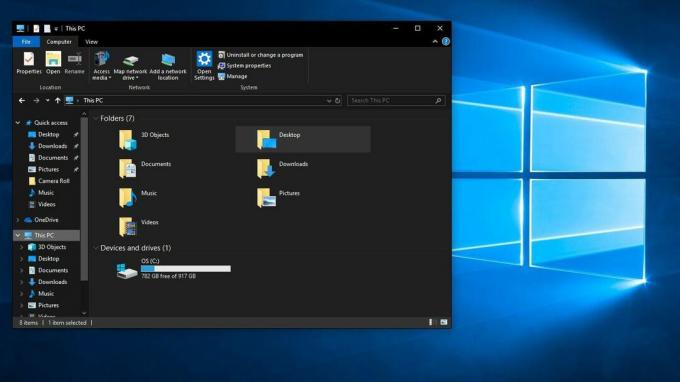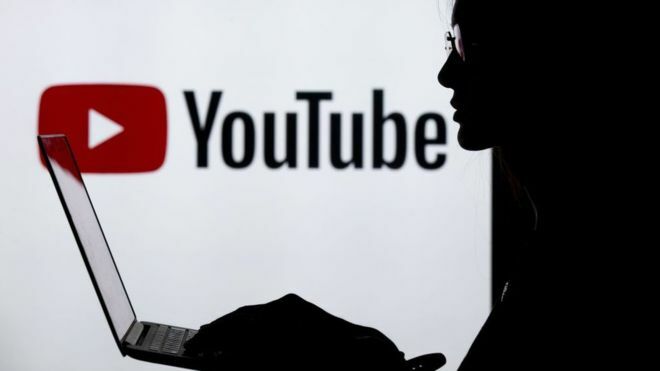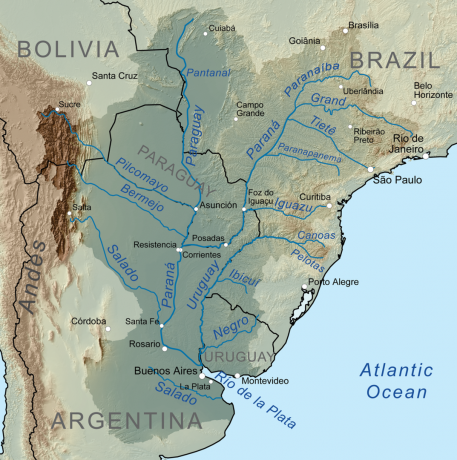The computer was not born for entertainment or e-mail. It was due to a need to resolve a serious crisis in number crunching.
In 1880, the US population grew so much that it took more than seven years to tabulate the results of the US Census. The government looked for a faster way to get the job done, giving rise to punch-card-based computers that took up entire rooms.
Today, we carry more computing power into our smartphones than were available on these early models. to soon history of computers is composed of a timeline of how computers evolved.
We show below its humble origins until the emergence of machines that surf the Internet, play games and transmit multimedia, in addition to analyzing the numbers.
History and Evolution of Computers
- 1801
In France, Joseph Marie Jacquard invents a loom that uses perforated wooden cards to automatically weave fabric designs. Early computers used similar punch cards.

- 1822
The English mathematician Charles Babbage designs a steam-powered calculating machine that would be able to calculate tables of numbers. The project, financed by the British government, was a failure.
More than a century later, however, the world's first computer was actually built.
- 1890
Herman Hollerith designs a punch-card system to calculate the 1880 census, accomplishing the task in just three years and saving the government $5 million. He establishes a company that would eventually become IBM.
- 1936
Alan Turing introduces the notion of a universal machine, later called the Turing machine. She was able to compute anything that is computable. The central concept of the modern computer was based on his ideas.
- 1937
J.V Atanasoff, professor of physics and mathematics at Iowa State University, tries to build the first computer without gears, cams, belts or axles.
- 1939
Hewlett-Packard is founded by David Packard and Bill Hewlett in a garage in Palo Alto, California, according to the Computer History Museum.
- 1941
Atanasoff and his graduate student, Clifford Berry, design a computer that can solve 29 equations simultaneously. This marks the first time a computer has been able to store information in its main memory.
- 1943 – 1944
Two professors from the University of Pennsylvania, John Mauchly and J. Presper Eckert, build the Electronic Numerical Integrator and Calculator (ENIAC). Considered the grandfather of digital computers, it filled an entire room and had 18,000 vacuum tubes.
- 1946
Mauchly and Presper leave the University of Pennsylvania and receive funding from the Census Bureau to build the UNIVAC, the first computer for commercial and government applications.

- 1947
William Shockley, John Bardeen and Walter Brattain of Bell Laboratories invent the transistor. They figured out how to make an electrical switch out of solid materials and without the need for a vacuum.
- 1953
Grace Hopper develops the first computer language, which eventually becomes known as COBOL. Thomas Johnson Watson Jr., son of IBM CEO Thomas Johnson Watson Sr., designs the IBM 701 EDPM to help the United Nations guard Korea during the war.
- 1954
The FORTRAN programming language, an acronym for Formula Translation, is developed by a team of IBM programmers led by John Backus, in agreement with the University of Michigan.
- 1958
Jack Kilby and Robert Noyce reveal the integrated circuit, known as a computer chip. Kilby was awarded the Nobel Prize in Physics in 2000 for his work.
- 1964
Douglas Engelbart shows a prototype of the modern computer, with a mouse and a graphical user interface (GUI). This marks the evolution of the computer from a specialized machine for scientists and mathematicians to a technology more accessible to the general public.
- 1969
A group of developers at Bell Labs produced UNIX, an operating system that solved compatibility issues. Written in the C programming language, UNIX was portable across many platforms.
It has become the operating system of choice among mainframes of large companies and government entities. Due to the slow nature of the system, it never managed to gain ground among home PC users.
- 1970
Newly formed Intel unveils Intel 1103, the first dynamic access memory (DRAM) chip.
- 1971
Alan Shugart leads a team of IBM engineers who invent the “floppy disk,” allowing data to be shared between computers.

- 1973
Robert Metcalfe, a member of the Xerox research team, develops Ethernet to connect various computers and other hardware.
- 1974 – 1977
Several personal computers have come onto the market, including the Scelbi & Mark-8 Altair, the IBM 5100, Radio Shack's TRS-80 – affectionately known as the “Trash 80” – and the Commodore PET.
- 1975
The January issue of Popular Electronics magazine features the Altair 8080, described as "the world's first minicomputer kit to compete with commercial models."
Two computer geeks, Paul Allen and Bill Gates, volunteer to write software for Altair, using the new BASIC language.
On April 4, after the success of this first venture, the two childhood friends form their own software company, Microsoft.
- 1976
Steve Jobs and Steve Wozniak start Apple Computers and launch Apple I, the first single-circuit board computer, according to Stanford University.

- 1977
Initial production of the TRS-80 Radio Shack was just 3,000 units. For the first time, non-geeks could write programs and make a computer do whatever they wanted.
- 1977
Jobs and Wozniak incorporate Apple and showcase the Apple II at the first West Coast Computer Faire. It offers color graphics and incorporates a cassette tape drive for storage.
- 1978
Accountants rejoice with the introduction of VisiCalc, the first computerized spreadsheet program.
- Free Online Inclusive Education Course
- Free Online Toy Library and Learning Course
- Free Online Math Games Course in Early Childhood Education
- Free Online Pedagogical Cultural Workshops Course
- 1979
Word processing becomes a reality when MicroPro International launches WordStar. “The defining change was to add margins and line breaks,” creator Rob Barnaby said via email to Mike Petrie in 2000″.
“Additional changes included getting rid of command mode and adding a print function. I was the technical brain – I figured out how to do it, and I did it, and I documented it.”
- 1981
IBM's first personal computer, codenamed “Acorn”, is introduced. It uses Microsoft's MS-DOS operating system. It has an Intel chip, two floppy disks and an optional color monitor.
Sears & Roebuck and Computerland sell the machines, marking the first time a computer has been available through outside distributors. Also popularizes the term PC.
- 1983
Apple's Lisa is the first personal computer with a GUI. It also has a drop-down menu and icons. It fails, but eventually evolves into the Macintosh.
The Gavilan SC is the first laptop with the familiar flip format and the first to be marketed as a “laptop”.
- 1985
Microsoft announces Windows, according to Encyclopedia Britannica. This was the company's response to Apple's GUI. Commodore unveils the Amiga 1000, which features advanced audio and video features.

- 1985
The first dot-com domain name is registered on March 15, years before the World Wide Web marks the formal beginning of Internet history.
Symbolics Computer Company, a small Massachusetts computer maker, registers Symbolics.com. More than two years later, only 100 dot-coms have been registered.
- 1986
Compaq brings the Deskpro 386 to market. Its 32-bit architecture provides speed comparable to mainframes.
- 1990
Tim Berners-Lee, a researcher at CERN, the Geneva high-energy physics laboratory, develops the HyperText Markup Language (HTML), giving rise to the World Wide Web.
- 1993
The Pentium microprocessor advances the use of graphics and music on PCs.
- 1994
PCs become gaming machines. “Command & Conquer”, “Alone in the Dark 2”, “Magic Carpet”, “Descent” and “Little Big Adventure” are among the games to be released in the market.
- 1996
Sergey Brin and Larry Page develop Google's search engine at Stanford University.
- 1997
Microsoft invests US$ 150 million in Apple, which was struggling at the time, ending the case of Apple v. Microsoft in which it claimed that Microsoft copied the “look and feel” of its operating system.
- 1999
The term Wi-Fi becomes part of the computing language and users begin to connect to the Internet wirelessly.
- 2001
Apple unveils the Mac OS X operating system, which offers protected memory architecture and preemptive multitasking, among other benefits. Not to be outdone, Microsoft releases Windows XP, which has a significantly redesigned graphical user interface.
- 2003
The first 64-bit processor, the AMD Athlon 64, becomes available for the consumer market.
- 2004
Mozilla's Firefox 1.0 challenges Microsoft's Internet Explorer, the dominant web browser. Facebook, a social networking site, is launched.
- 2005
YouTube, a video sharing service, is founded. Google acquires Android, a Linux-based mobile operating system.

- 2006
Apple introduces the MacBook Pro, its first Intel-based dual-core mobile computer, as well as an Intel-based iMac.
- 2007
The iPhone brings many computer functions to a cell phone.
- 2009
Microsoft releases Windows 7, which offers the ability to pin apps to the taskbar and advances in touch and handwriting recognition, among other features.
- 2010
Apple unveils the iPad, changing the way consumers view media and driving the tablet computer segment.
- 2011
Google launches Chromebook, a laptop running Google Chrome OS.
- 2012
Facebook gains 1 billion users on October 4th.
- 2015
Apple launches the Apple Watch. Microsoft releases Windows 10.
- 2016
The first reprogrammable quantum computer was created. “Until now, there has been no quantum computing platform that has the ability to program new algorithms into its system.
They are usually tailored to attack a particular algorithm,” said the lead author of the study, Shantanu Debnath, quantum physicist and optical engineer at the University of Maryland, College Park.
- 2017
The Defense Advanced Research Projects Agency (DARPA) is developing a new “Molecular Informatics” program that uses molecules like computers.
"Chemistry offers a rich set of properties that we can leverage for fast and scalable information storage and processing." The account is from Anne Fischer, program manager for DARPA's Department of Defense Sciences.
“Millions of molecules exist, and each molecule has a unique three-dimensional atomic structure, as well as variables like shape, size or even color. This richness provides a vast design space to explore new, multi-value ways to encode and process data beyond the 0s and 1s of today's logic-based digital architectures.”
Related Content:
- Learn how Computer Recycling works
The password has been sent to your email.

